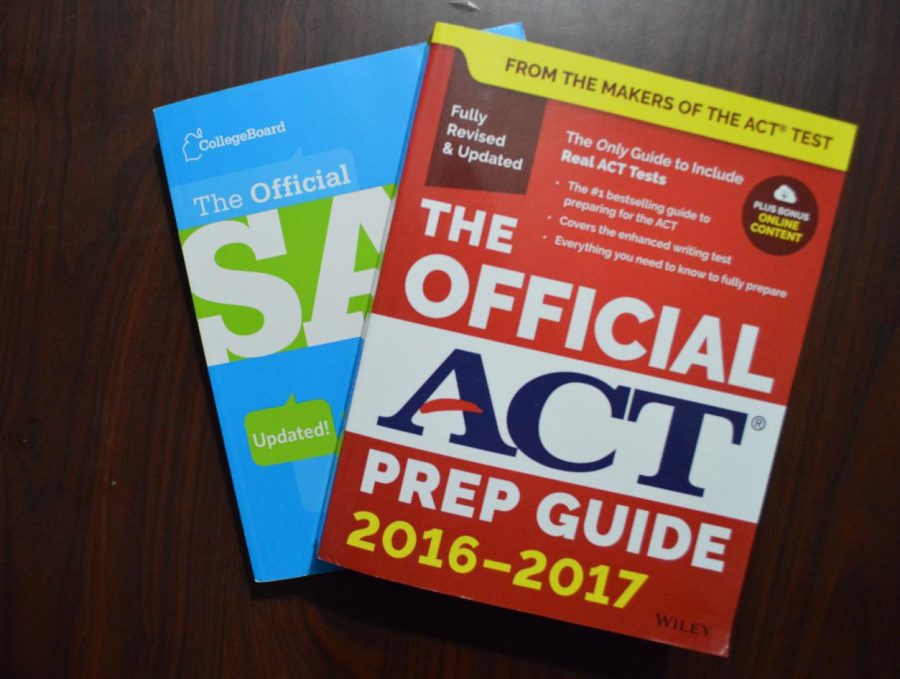Which Test is for You?
SAT vs ACT
Photo By Richies Tiv
March 29, 2018
Once a month two of our staff members, Matt Cushman and Richies Tiv, are given a topic and they have 30 minutes to debate it. However, they are not allowed to speak. They type their arguments on a Google Document. They are allowed to use any research they can find on the internet to support their viewpoint.
Richies: So the first issue I think we should discuss regarding the SAT vs ACT are the different sections in each test and how they compare with each other. I will be talking about the ACT that is divided into 4 sections—english, mathematics, reading and science. Along with these 4 subsections that go into calculating a student’s composite score(out of 36), there is an optional Writing sections (out of 12).
Matt: Well the SAT has four or five sections: Math with calculator, math without calculator, reading, english, and then an optional essay portion. The overall score you can get on the SAT can go up to a 1600 and also provides individual scores for each section. The good part is that if you are not into science, there is none of that in this test!
Richies: So students that have a strong background in science should consider taking the ACT as opposed to the SAT. In addition, the ACT weights each of the 4 subsections equally: an average of each section’s score is used to calculate the composite score. The writing section is not included in the composite score. It is its own category.
Matt: While the ACT is more balanced, the SAT has the math score at 50 percent of your overall score and then the two English sections as 25 percent. Being good at math should definitely lead you more towards SAT.
Richies: The ACT places a lot of emphasis on time. When I took the ACT, I felt more rushed than when I took the SAT. However, people say it’s because the SAT involves “harder” or more thought provoking questions. The section lengths are as follows: english is 45 minutes, mathematics is 60 minutes, reading is 35 minutes and science is also 35 minutes. The optional writing section lasts 40 minutes.
Matt: The SAT has times that vary for each section and may include breaks, which could make the total test time to be about 3 hours. The reading is 65 minutes, the writing and language is 35 minutes, the math with no calculator is 25 minutes, the math with calculator is 55 minutes, and the optional essay is 50 minutes.
Richies: As for difficulty, the ACT math and science sections increase in difficulty as you progress through the sections. However, reading and english sections have randomized order of difficulty. The ACT is offered 7 times a year and students are allowed to take the test up to 12 times. Also note that guessing in the ACT does not result in the loss of points.
Matt: For the SAT, the difficulty is randomized throughout the whole test. It is also offered 7 times a year and guessing also does not cause you to lose points. For Kaneland, the SAT is the test you are required to take, and many other schools are also switching to have the SAT as the main test.
Richies: The math section in the ACT is based on the following topics: arithmetic, Algebra I, Algebra II, trigonometry, functions and geometry. The questions seem to be more straightforward than the SAT and you are able to use your calculator throughout the entire section for the ACT. In addition, no formula sheet is given in the ACT so it’s helpful to memorize the basic formulas. Some formulas are given in a specific question such as the law of cosines, but the ACT may require you to manipulate it. The ACT math also includes additional math concepts that the SAT does not, such as logarithms, matrices and graph of trig functions. The number of answer choices in each section of the ACT is four: ABCD or FGHJ.
Matt: The SAT has a formula sheet at the beginning of the section for you to reference, but I found myself never needing to use it. The math included is Heart of Algebra, Passport to Advanced Math, Problem Solving and Data Analysis as well as an Additional Math Concepts that take up 10 percent of the test. This includes a lot of geometry and word problems that have to due with volumes and shapes. As well as regular multiple choice, which has five options ABCDE, there are a few problems where you have to write and bubble in your answers on a sort of grid, which gives you enough room for a decimal place or a division/fraction sign so that you can properly fill out your answer.
Richies: Another major difference in the SAT/ ACT subsections is the reading test. The ACT reading questions are not in chronological order with the passage while the SAT is. As a result, more emphasis is placed on detail questions for the ACT. Furthermore, some of the SAT reading questions asks you to back up your previous answer with quotes from the text. The ACT does not ask of that. The ACT now has one (out of four) sections in the reading test that is conflicting viewpoints—two related passages in one section.
Matt: As well as having answers that back up a quote, there is a lot of passage comparison and contrast in this SAT test. After reading two separate passages and answering questions for each, the test will then ask you to compare and contrast what you read or as questions like “Which author would have agreed with the following statement…” showing that you understood the overall message of the stories and look back for specific details.
Richies: In general, if you are a fast test taker with strengths in science and are well rounded in english, reading, math and science, the ACT is the test for you. Also note that almost all colleges equally accept the ACT or SAT. It is a matter of preference.
Matt: If you are math oriented and don’t really like science, the SAT is for you. Also take note that a lot of high schools are making the SAT the mandatory test, but you are still able to take the ACT on your own if you think that one will be better for you!





